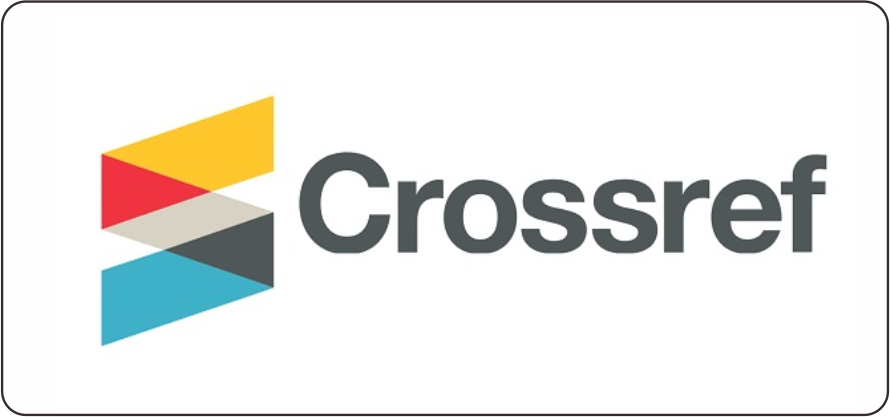Pengaruh Laverage Maturity dan Size Perusahaan Terhadap Yield Obligasi Dengan Peringkat Obligasi Sebagai Variabel Intervening
DOI:
https://doi.org/10.32500/jematech.v2i1.574Keywords:
Bond yield, bond rating, leverage, maturity, sizeAbstract
This study aims to get empirical evidence on the effect of leverage, maturity, and size of the company against the results with intervening variables. The population in this study is all companies listed in Indonesia Stock Exchange (BEI) during 2011-2015 which has bonds inperiod 2012-2016.These bonds were assessed by rating agents of PT. Pefindo. Testing is done by using the path analysis, to determine the effect of leverage, maturity, and size of the company to the bond rating. Second path is for leverage, maturity, size, and ranking of results. Sobel test to process the mediation / intervening. The results show that leverage does not affect the rank, maturity and size of the company signed to the rating of bonds. The results of the road trials show that leverage and size have no effect on yield, maturity and assessment have a significant effect on results. From the Sobel, Results to test the test capable of mediating leverage variables, and the size of the bond yield, while the maturity of the results cannot be mediated by the bond rating.
References
Amalia, N. (2013). Pemeringkatan Obligasi PT Pefindo: Berdasarkan Informasi Keuangan. Accounting Analysis Journal 1 (3) (2013)
Aman, H., & Nguyen, P. (2013). Does Good Governance Metter to Deptholders? Evidence From the Credit Rating of Japanese Firm. Research in International Business and Finance 29: 14-34.
Andersona, C. Ronald., dan A. Mansib, S., Founding, R. M. D. (2001). Family Ownership and the Agency Cost of Debt. http://www1. american.edu/academic.depts/ksb/finance realestate/mrobe/seminar/family ebt.pdf. 20 Maret 2014
Anderson, C. R., dan A. Mansi, S., Reeb, M. D. (2004). Board characteristics, accounting report integrity, and the cost of debt. Journal of Accounting and Economics, 37 (2004) 315–342
Anginera, D., & Warburton, A. J. (2014). The Chrysler effect: The impact of government intervention on borrowing costs. Journal of Banking & Finance 40 (2014) 62–79
Aprilia, S. (2011). Analisis Rasio Keuang dalam Memprediksi Peringkat Obligasi.Skripsi.Fakultas Ekonomi dan Bisnis Universitas Islam Negeri Syarif Hidayatulloh Jakarta. Jakarta
Ashbaugh-Skaife, H., dan. W. Collins., LaFond, R. (2006). The effects of corporate governance on firms’ credit ratings. Journal of Accounting and Economics, 42 (2006) 203–243
Bradley, M., & Chen, D. (2011). Corporate governance and the cost of debt: Evidence from director limited liability and indemni fi cation provisions. Journal of Corporate Finance 17 (2011) 83 – 107
Bursa Efek Indonesia. (2018). http://www.idx.co.id/produk/surat-utang-obligasi/
Bhojraj, S., & Sengupta, P. (2003). Effect of Corporate Governance on Bond Ratings and Yields: The Role of Institutional Investors and Outside Directors. Journal of Business, 2003, vol. 76, no. 3.
Cohen, G. (2014). On the Impact of Bond's Rating Changes on the Firm's Stock Price. International Journal of Financial Research. Vol. 5, No. 1; 2014
Favero, C., dan M. Pagano., Thadden, E. (2010). How Does Liquidity Affect Goverment Bond Yields?.Journal Of Financial and Quantitative Analysis Vol. 45, No. 1, Feb. 2010, pp. 107–134
Faychuk, V. (2016). Credit Ratings Overreliance in Municipal Bonds Market. Department of Economics Miami University, 3003 FSB, Oxford, OH 45056
Ghozali, I. 2013. Aplikasi Analisis Multivariate dengan Program IBM SPSS 21. Badan Penerbit Universitas Diponegoro. Semarang.
Handayani, K.W.M.A., & Artini, S.G.L. (2012). Pengaruh Faktor Ekonomi Makro, Keputusan Investasi Dan Keputusan Pendanaan Terhadap Yield Obligasi Korporasi Di Bursa Efek Indonesia. http://ojs.unud.ac.id /index.php/EEB/article/viewFile/5088/3909.
Hartono, J. (2013). Teori Portofolio dan Analisis Investasi. Edisi Ketujuh. BPFE-Yogyakarta.
Hovakimian, A., dan A. Kayhan., Titman, S. (2009). Credit Rating Targets.http://www.insead.edu/facultyresearch/areas/finance/activities/documents/credit_rating_targets.pdf diakses pada tanggal 30 Desember 2014.
Ibrahim, H. (2008). Pengaruh Tingkat Suku Bunga, Peringkat Obligasi, Ukuran Perusahaan Dan Der Terhadap Yield To Maturity Obligasi Korporasi Di Bursa Efek Indonesia Periode Tahun 2004-2006. Tesis.Pasca Sarjana Universitas Diponegoro Semarang. Semarang.
Indarsih, N. (2013). Pengaruh Tingkat Suku Bunga SBI, Rating, Likuiditas Dan Maturity Terhadap Yield To Maturity Obligasi. Jurnal Ilmu Manajemen Volume 1 Nomor 1 Januari 2013
Kustiyaningrum, D., dan E. Nuraina., AL Wijaya. (2017). Pengaruh Leverage, Likuiditas, Profitabilitas, dan Umur Obligasi terhadap Peringkat Obligasi (Studi pada Perusahaan Terbuka yang Terdaftar di Bursa Efek Indonesia). Assets: Jurnal Akuntansi dan Pendidikan, 5 (1), 25-40
Maghreta & Nurmayanti, P. (2009). Faktor-Faktor Yang Mempengaruhi Prediksi Peringkat Obligasi Ditinjau dari Faktor Akuntansi dan Non Akuntansi. Jurnal Bisnis DanAkuntansi. Vol. 11, No. 3, Desember 2009, 143 - 154ISSN: 1410-9875.
Mahfuddin, A. (2013). Makalah pendekatan kontingensi. arimahfuddin.blogspot.com/2013/08/makalah-pendekatan-kontingensi.html
Manurung, A. H., dan D. Silitonga., & Tobing, W.R.L. (2009). Hubungan Rasio Rasio Keuangan dengan Rating Obligasi. PT Finansial Bisnis Informasi Jakarta.
Nurfauziah & Setyarini, A. F. (2004). Analisis Faktor-Faktor yang Mempengaruhi Yield Obligasi perusahaan (Studi Kasus Pada Industri Perbankan dan Industri Finansial). Jurnal Siasat Bisanis. Vol. 2, No. 9, h. 241-256
Purnamawati, A. G. I. (2013). Pengaruh Peringkat Obligasi, Tingkat Suku Bunga-Sertifikat Bank Indonesia, Rasio Leverage, Ukuran Perusahaan Dan Umur Obligasi Pada Imbal Hasil Obligasi Korporasi Di Bursa Efek Indonesia. VOKASI Jurnal Riset Akuntansi. Vol. 2 No.1, April 2013, ISSN 2337 – 537X
Raharja., & Sari, P. M. (2008). Kemampuan Rasio keuangan dalam Memprediksi Peringkat Obligasi. Jurnal Maksi.Vol. 8. 2 Agustus 2008: 212-232
Setyapurnama, Y.S., & Norpratiwi, A.M.V. (2009). Pengaruh Corporate Governance Terhadap Peringkat Obligasi. Artikel ini diakses lewat
Shield, J. F., & Shields, M. D. (1998). Antecedents Of Participative Budgeting. Accounting, Organizations and Society.Volume 23, Issue 1, January 1998, Pages 49–76
Situmorang, B. (2017). Pengaruh Peringkat Obligasi, Debt To Equity Ratio Dan Ukuran Perusahaan Terhadap Yield To Maturity Obligasi Korporasi Dengan Tingkat Suku Bunga Sbi Sebagai Variabel Moderating. Jurnal Terapan Manajemen dan Bisnis (3/1) 2017 / 42-58
Sumarto & Susilowati, L. (2010). Memprediksi Tingkat Obligasi Perusahaan Manufaktur yang Listing di BEI. Jurnal Mitra Ekonomi dan Manajemen Bisnis, Vol.1, No. 2, Oktober 2010, 163-175
Sunariyah. (2000). Pengantar Pengetahuan Pasar Modal. Edisi Kedua.UPP AMP YKPN. Yogyakarta
Supriyono, R.A. (2004). “Pengaruh Variabel intervening Kecukupan Anggaran dan Komitmen Organisasi terhadap Hubungan Antara Partisipasi Anggaran dan Kinerja Manajer di Indonesia”. Jurnal Ekonomi dan Bisnis Indonesia. Vol.19, No. 3.
Surya, B. A., & Nasher, T. G. (2011). Analisis Pengaruh Tingkat SUku Bunga SBI, Exchange Rate, Ukuran Perusahaan, Debt To Equity Ratio dan Bond Terhadap Yield Obligasi Korporasi di Indonesia. Jurnal Manajemen Teknologi. Volume 10 Number 2 2011











